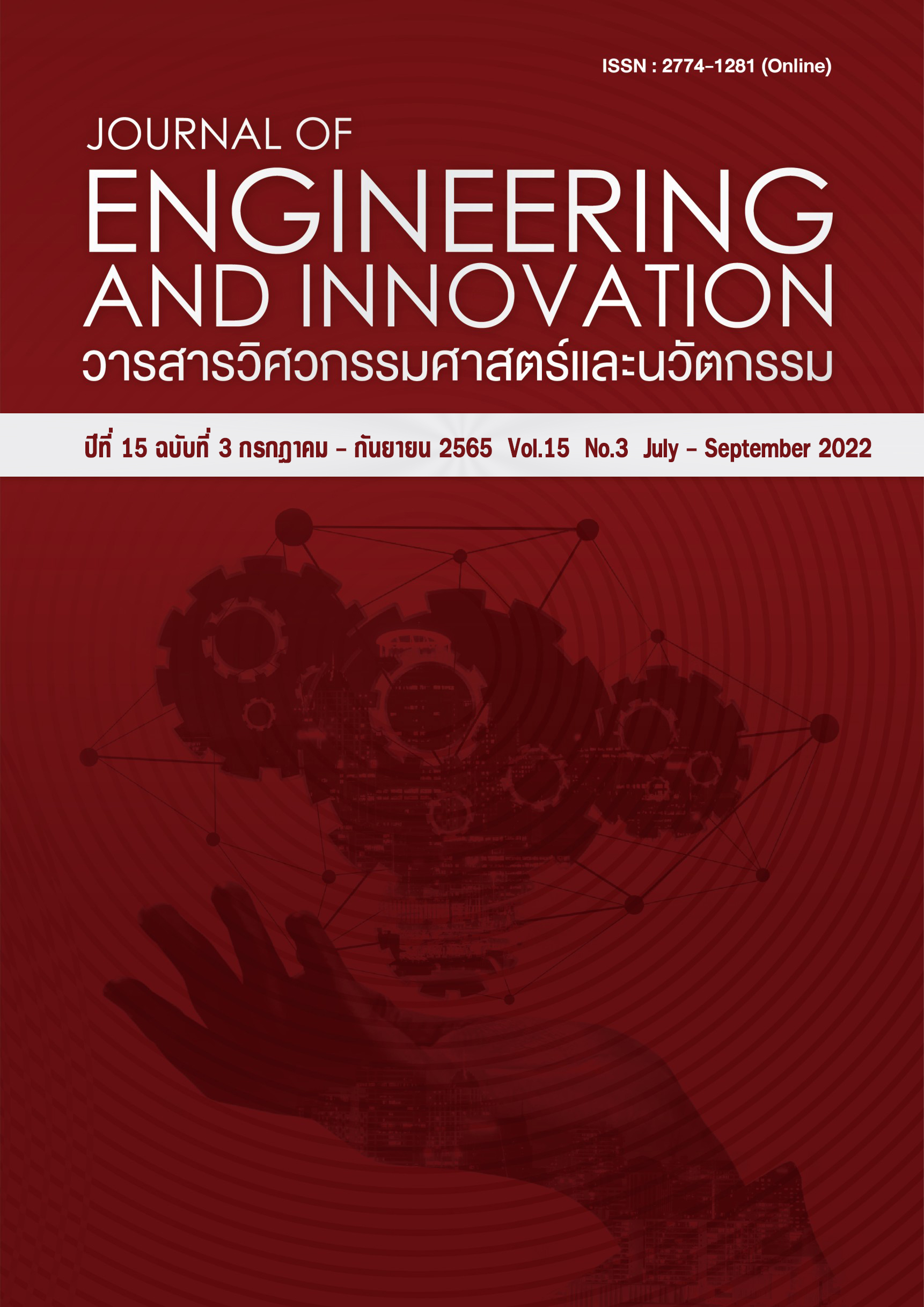Application of linear programming model for production planning: a case study of the automotive parts manufacturing company
Main Article Content
Abstract
This research studies the production planning process in an automotive parts manufacturer case study with the Heijunka method and studies to apply of linear programming (LP) model in the case study to compare the manufacturing costs of two method. This study considers the costs incurred by labor produced during regular production hours and overtime production hours, including the holding cost. Study results show that the total cost of the linear programming method is less than the Heijunka method about 15%. Although the LP method has a lower total cost, the daily production plan is highly fluctuated. In contrast, the Heijunka method, production plans were adjusted more smoothly by consolidating data all week which makes the production plan in each day less fluctuated than linear programming method.
Article Details
References
วรรณา ยงพิศาลภพ. แนวโน้มธุรกิจ/อุตสาหกรรม ปี 2563-65 อุตสาหกรรมชิ้นส่วนยานยนต์. ธนาคารกรุงศรี. 2563. เข้าถึงได้จาก: https://www.krungsri.com/th/ research/industry/industry-outlook/Hi-tech-Indus tries/Automobiles/IO/io-automobile-20 [เข้าถึงเมื่อ 1 เมษายน 2564]
Jamalnia A, Yanga J, Xua D, Feilib A. Novel decision model based on mixed chase and level strategy for aggregate production planning under uncertainty: Case study in beverage industry. Computers & Industrial Engineering. 2017; 114: 54-68.
Gulsun B, Tuzkaya G, Tuzkaya UR, Onut S. An Aggregate Production Planning Strategy Selection Methodology based on Linear Physical Programming. International Journal of Industrial Engineering. 2009; 16(2): 135-146
สรไกร อังสุทัตสรณ. การวางแผนการผลิตสินค้าหลายผลิตภัณฑ์ในแต่ละช่วงเวลาด้วยค่าใช้จ่ายคงที่ : กรณีศึกษาสินค้ากระเบื้องมุงหลังคาคอนกรีต. วิทยานิพนธ์. นครปฐม: มหาวิทยาลัยศิลปากร; 2560.
Jyothi DN, Rao KSP, Sivasundari M. Application of Linear Programming Model for Production Planning in an Engineering Industry-A Case Study. International Journal of Engineering Research & Technology (IJERT). 2019; 8(10): 613-618.
Kriri OM. Use of linear programming for optimal production in a production line in Saudi food Co. International Journal of Industrial and Manufacturing Engineering. 2018; 12(3): 467-471
ปรีดี มาไพศาลสิน. การออกแบบเครื่องมือช่วยในการตัดสินใจสำหรับการวางแผนการผลิตรวมและการบริหารคลังสินค้า กรณีศึกษาโรงงานฟองเต้าหู้ตัวอย่าง. วิทยานิพนธ์. นครปฐม: มหาวิทยาลัยศิลปากร; 2561.
พฤทธ์สรรค์ สุทธิไชยเมธี. การประยุกต์ใช้ Linear Programming สำหรับการวางแผนการผลิตทางการเกษตรและติดตามผลการดำเนินงานตามหลักปรัชญาเศรษฐกิจพอเพียง. วารสารสุทธิปริทัศน์. 2555; 26(78): 19-36.
เพชรายุทธ แซ่หลี, อภิชัย ฤตวิรุฬห์. แบบจำลองกำหนดการเชิงเส้นจำนวนเต็มสำหรับการวางแผนการผลิตเครื่องสำอางจากสมุนไพร. วารสารวิจัยและพัฒนา มจธ. 2557; 37(3): 347-360.
ธันยพร อุดม, ภูพงษ์ พงษ์เจริญ, ขวัญนิธิ คำเมือง. การแก้ปัญหาการวางแผนและจัดตารางการผลิตขั้นสูงที่พิจารณาการบำรุงรักษาเชิงป้องกัน แบบมีกรอบเวลา โดยตัวแบบกำหนดการจำนวนเต็มแบบผสม. วารสารไทยการวิจัยดำเนินงาน. 2559; 4(1): 1-15.
ชลธิชา สินธุสุวรรณ์, ปณัทพร เรืองเชิงชุม. การปรับปรุงประสิทธิภาพด้วยการลดความสูญเปล่า ในกระบวนการจัดการสินค้าคงคลัง กรณีศึกษาธุรกิจจำหน่ายอะไหล่ยนต์ จังหวัดขอนแก่น. วารสารวิชาการศรีปทุม ชลบุรี. 2563; 6(4): 197-207.
เพ็ญภัทร์ อารี, นระเกณฑ์ พุ่มชูศรี. การวางแผนการผลิตสำหรับชิ้นส่วนยานยนต์ที่มีความต้องการสินค้าไม่แน่นอน. วิศวกรรมสารฉบับวิจัยและพัฒนา. 2558; 26(3): 71-79.
ระพีพันธ์ ปิตาคะโส. ปัญหาและวิธีการแก้ปัญหา การหาขนาดการผลิตที่เหมาะสม. วารสารวิชาการ วิศวกรรมศาสตร์ ม.อบ. 2552; 2(2): 47-64.
Ransikarbum K, Mason SJ. Multiple-objective analysis of integrated relief supply and network restoration in humanitarian logistics operations. International Journal of Production Research. 2016; 54(1): 49-68.
Ransikarbum K, Mason SJ. Goal programming-based post-disaster decision making for integrated relief distribution and early-stage network restoration. International Journal of Production Economics. 2016; 182: 324-341.
Ransikarbum K, Ha S, Ma J, Kim N. Multi-objective optimization analysis for part-to-Printer assignment in a network of 3D fused deposition modeling. Journal of Manufacturing Systems. 2017; 43(1): 35-46.
Wattanasaeng N, Ransikarbum K. Model and analysis of economic- and risk-based objective optimization problem for plant location within Industrial estates using epsilon-constraint algorithms. Computation. 2021; 9(4), 46: 1-22.

